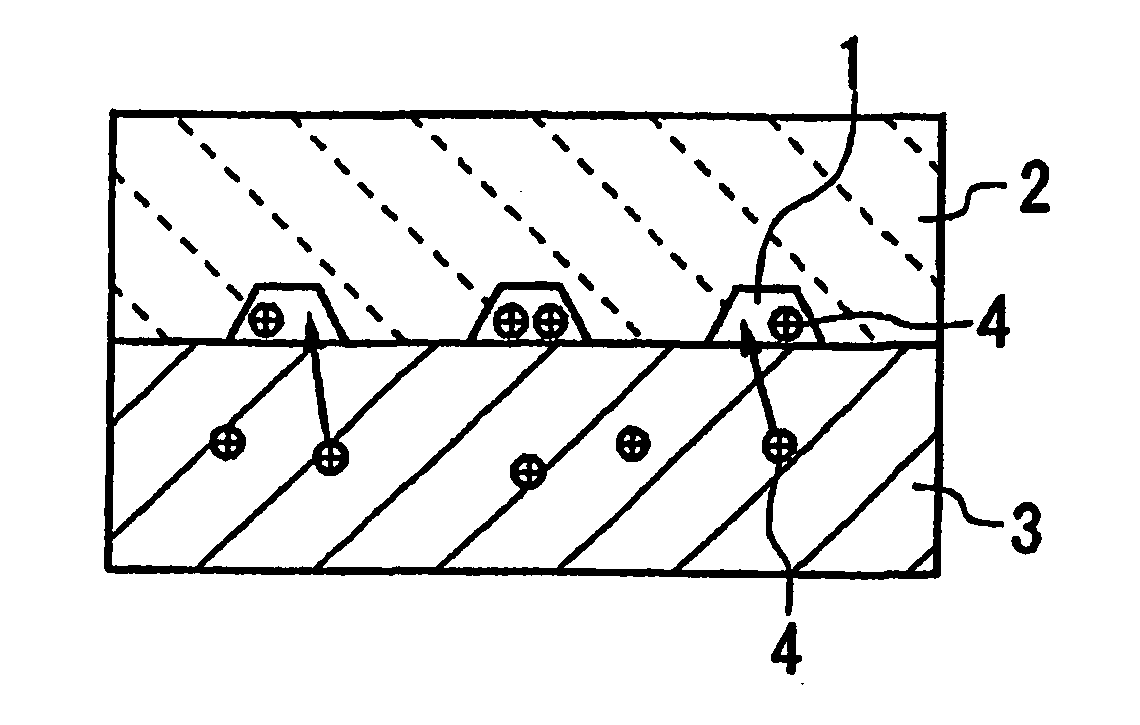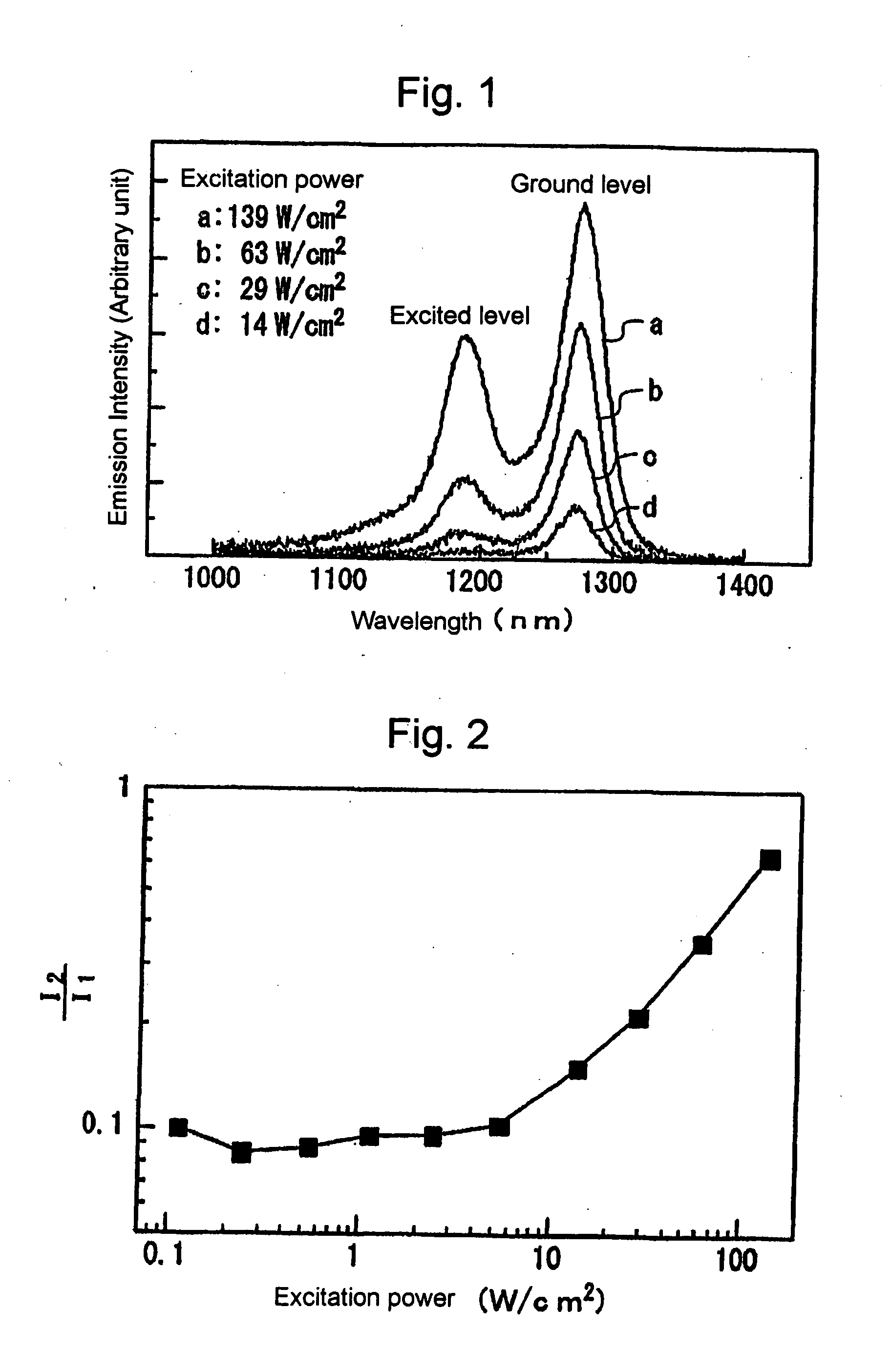Semiconductor quantum dot device
a quantum dot and semiconductor technology, applied in semiconductor devices, lasers, semiconductor lasers, etc., can solve the problems of reducing light emission efficiency, quantum dot lasers with operating speed exceeding that of semiconductor lasers, and structure or quantum well structure has not yet been proposed, so as to suppress the increase in the relaxation time of carriers
- Summary
- Abstract
- Description
- Claims
- Application Information
AI Technical Summary
Benefits of technology
Problems solved by technology
Method used
Image
Examples
first embodiment
[0049] As shown in FIG. 4A, the semiconductor quantum dot device according to the first embodiment is a construction in which a plurality of quantum dots 1 which have been formed from an undoped semiconductor are disposed on the surface of p-type semiconductor barrier layer 3 at a surface density of, for example, 5×10 cm−2.
[0050] P-type impurity is injected into p-type semiconductor barrier layer 3, whereby a multiplicity of holes 4 exist in the interior of p-type semiconductor barrier layer 3. A portion of these holes 4 are introduced into adjacent quantum dots 1. In other words, this is a construction in which quantum dots 1 shown in FIG. 4A contain holes 4 even though these quantum dots 1 are not injected with p-type impurity (i.e., the quantum dots are undoped). As shown in FIG. 4B, these holes 4 are in the ground level of the valence band of quantum dots 1, and the ground level of the valence band is therefore filled by holes 4. In addition, quantum dots 1 are covered by undop...
second embodiment
[0076]FIG. 7A is a view showing the construction of the second embodiment of the semiconductor quantum dot device according to the present invention, and FIG. 7B is an energy band diagram of this quantum dot device.
[0077] The quantum dot device of the second embodiment is a construction in which quantum dots 1 are formed on undoped semiconductor barrier layer 3a, and p-type semiconductor barrier layer (p-type impurity region) 2a is formed on quantum dots 1. Holes 4 which are generated by the p-type impurity introduced into p-type semiconductor barrier layer 2a are introduced into quantum dots 1. In the quantum dot device according to this second embodiment as well, action and effects can be obtained that are equivalent to the action and effects of the first embodiment.
[0078] In addition, although examples were presented in above-described the first and second embodiments in which a p-type impurity is doped in a semiconductor barrier layer (p-type impurity region) which is disposed...
examples
[0079] Explanation next regards examples of the present invention with reference to the accompanying drawing.
PUM
 Login to View More
Login to View More Abstract
Description
Claims
Application Information
 Login to View More
Login to View More - R&D
- Intellectual Property
- Life Sciences
- Materials
- Tech Scout
- Unparalleled Data Quality
- Higher Quality Content
- 60% Fewer Hallucinations
Browse by: Latest US Patents, China's latest patents, Technical Efficacy Thesaurus, Application Domain, Technology Topic, Popular Technical Reports.
© 2025 PatSnap. All rights reserved.Legal|Privacy policy|Modern Slavery Act Transparency Statement|Sitemap|About US| Contact US: help@patsnap.com



